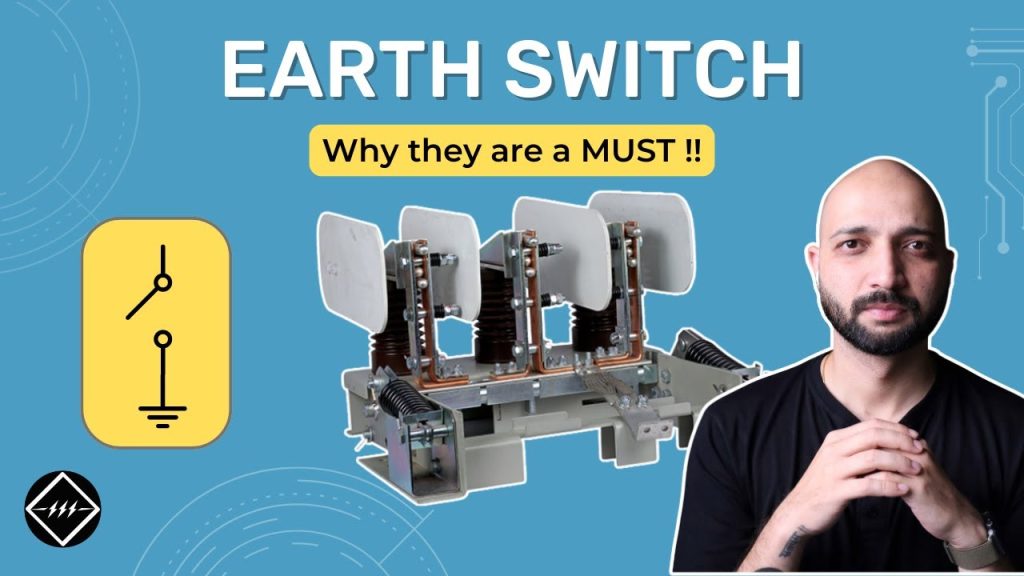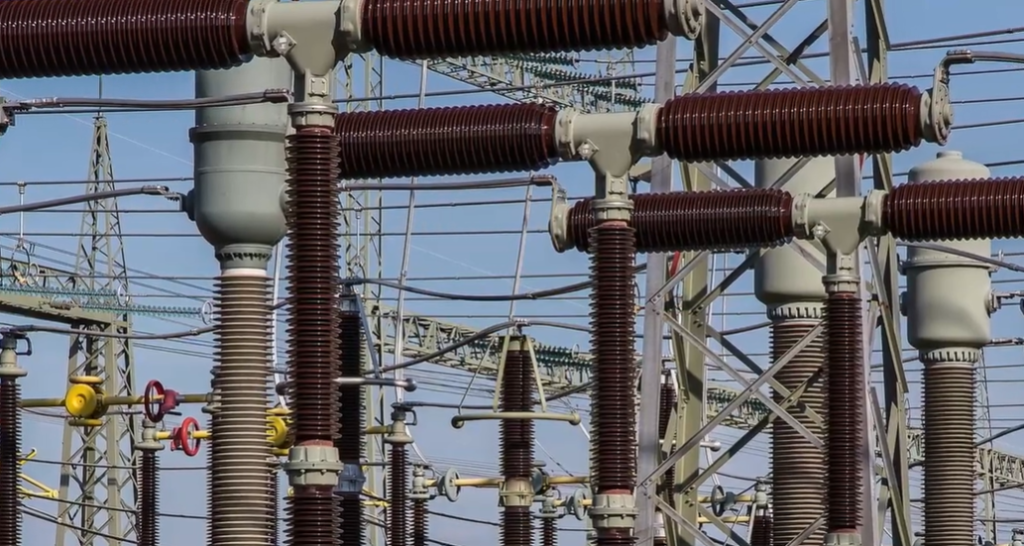
What Is Earth Switch and Why We Need Them
What Is Earth Switch and Why We Need Them https://www.theelectricalguy.in/wp-content/uploads/2025/11/maxresdefault-5-1024x576.jpg 1024 576 Gaurav Joshi Gaurav Joshi https://secure.gravatar.com/avatar/8d621b67d3005addbda23477c1259921ee1db2decf01a4f473bf0e5c76f3933a?s=96&d=mm&r=gElectric power systems use many devices to keep people and equipment safe. We use circuit breakers to switch power during normal and fault conditions. We also use disconnectors to create a visible isolating gap during maintenance. These devices play a key role. Yet they are not enough to make a system completely safe. So the question comes up: what is earth switch and why we need them?

To answer this, this article follows the same flow as the video. It explains why we need earth switches, how they work, where we use them, and how standards define them. It also explains their types, ratings, and role during faults. The aim is to help you understand this device in a simple way.
Table of Contents
- Why We Need Earth Switch and Why They Matter
- How a Transmission Line Holds Charge Even After Shutdown
- How Earth Switch Helps Remove Trapped Charges
- Important Features of an Earth Switch
- Different Types of Earth Switches
- Definition of Earth Switch as Per IEC Standard
- IEC Classification Based on Making Capacity
- High-Speed Earth Switches for Fault Protection
- Why Earth Switch Is a Crucial Part of Any System
- Conclusion
Why We Need Earth Switch and Why They Matter
This example uses a water pump and a pipe. It helps us understand how trapped charges behave in a line.
When we turn on the pump, the water flows in the pipe. It reaches its final point. This is normal operation. When we turn off the pump, the water stops flowing. Yet the pipe does not become empty. Some water stays inside.

Now, if we want to remove that extra water, we can tilt the pipe. The water then flows out. After that, the pipe becomes fully empty.
This simple example explains a key point. Even after we cut the source, some water stays in the pipe. In the same way, even when we cut power in a line, some charges stay trapped.
How a Transmission Line Holds Charge Even After Shutdown
Now imagine a power line instead of a pipe. A transmission line carries power across long distances. When we disconnect the line from both ends, the power flow stops. But the line does not become empty. Some free electrons stay inside the line. They remain trapped. They wait for a path to escape.
This is where the risk begins. If a person touches the line during maintenance, these trapped charges may try to reach the ground through that person. This can cause a serious shock. The amount of charge is unknown. So the danger is high. The operator’s life becomes unsafe in this situation.

This can happen not only in transmission lines, but also in busbars in substations. So the risk is common in many parts of a power system.
We cannot tilt a line like a pipe, so we need another method to remove trapped charges. That is why a safe device must give these charges a direct path to the ground. In such situations, the earth switch becomes important because it offers that low-resistance route.
How Earth Switch Helps Remove Trapped Charges
To make the line safe, we add a dedicated switch. This switch connects the line directly to the ground. It gives the trapped charges a low-resistance path.
So after disconnecting the line from the supply, we do one more step. We close the earth switch. When we close it, all trapped electrons flow to the ground. They take this easy path. Once they leave the line, the conductor becomes safe to touch.
Now if an operator touches the line, nothing happens. The line becomes free from any charge. This simple process makes the working condition safe.
Because this switch connects the system to the earth, we call it an earth switch or grounding switch. Both terms mean the same thing.
This is the main reason behind what is earth switch and why we need them. Without an earth switch, safe maintenance is not possible.
Important Features of an Earth Switch
The device looks simple, but it has some important points. These points explain what it can and cannot do.
It Has No Continuous Current Carrying Capacity
Under normal conditions, we do not close the earth switch. We only close it when the line is open and isolated. So the switch never carries continuous load current. That is why it has no continuous current rating. If a system carries 2,000 amps during normal operation, the earth switch will not handle that.

It May Have Short-Time Withstand Capacity
There can be cases where the earth switch is closed and then a fault happens. In such cases, a high current flows for a short time. The switch must withstand this short burst of current. This duration can be 1 second or 3 seconds. This is not continuous. It is only for a limited period.

It May Have Making Capacity
There is a second situation. Sometimes a fault already exists in the system. In such a case, we may need to close the earth switch during the fault. So the switch must have the ability to close on a fault. This is called making capacity. It is important for safety.

All these capabilities are checked by type tests. These tests confirm that the switch will work well during fault conditions.
These three points help us understand the switch better. They explain how the device behaves and what ratings matter.
Different Types of Earth Switches
We see mainly two types of earth switches in the field.
Independent Earth Switches
These switches work as stand-alone devices. They are mounted inside a panel or in a separate earthing panel. They have their own operating mechanism. These switches are used when earthing is needed at a specific location.

Combined Earth Switches
In this type, the earth switch comes with another device. A common example is an earth switch attached to a disconnector. Many gas-insulated switchgear units also use this setup. The device shares its structure with the disconnector. So we see both parts inside the same housing.

There are also disconnecting circuit breakers that may have an integrated earth switch. These combinations help save space and also reduce installation time.
Definition of Earth Switch as Per IEC Standard
There are many confusing definitions found online. To clear this, the IEC standard gives an exact definition.
The standard IEC 62271-102 says:
An earth switch is a mechanical switching device for earthing parts of a circuit. It can withstand, for a specified time, currents under abnormal conditions such as short circuit. It is not required to carry current under normal conditions.
This statement explains the device clearly. It tells us that the earth switch:
- is a mechanical switching device
- is used for earthing
- can handle short-term fault current
- does not need continuous current rating
It also aligns with the earlier points discussed in the article.
IEC Classification Based on Making Capacity
The IEC classifies earth switches into three main categories. These groups depend on the short-circuit making capacity.
E0 Class
This class means the earth switch has no making capacity. It cannot close on a fault. If we try to close it during a fault, it may fail. So we must know the class before we operate it.
E1 Class
This class allows two short-circuit making operations. The switch can handle two fault-closing events without failing.
E2 Class
This class allows five short-circuit making operations. It is the highest class among the three. It is more robust and can handle more fault events.



We must know the class before using the switch. The nameplate often shows this data. If it is not there, we must check the device details. Operating the wrong class can lead to failure.
High-Speed Earth Switches for Fault Protection
Earth switches do more than remove trapped charges. Some types also protect the system during internal faults. These are called high-speed earth switches.

These switches close very fast. They close faster than many circuit breakers. Their job is to divert a fault current to the ground. They help protect people and equipment near the switchgear.
Why We Need High-Speed Earth Switches
In medium-voltage panels or gas-insulated switchgear, internal faults can happen. These faults create arcs. Arcs release light and heat. They can damage equipment and injure people. So we must react fast to such faults.
High-speed earth switches work with sensors. These sensors detect:
- high current
- intense light from arc faults
When the sensors detect these signs, they send a signal to the switch. The switch then closes at high speed. It grounds the fault. This reduces damage. It also protects workers near the switchgear.
How They Work in Real Systems
One example from the video shows an earth switch placed inside a vacuum-filled pole unit. It has a mechanism that closes quickly when triggered. When it closes, it creates a short-circuit path to ground. This pulls the fault current to earth. It helps the system survive the fault.
High-speed earth switches prevent major accidents. They work faster than breakers and offer a critical layer of protection.
Why Earth Switch Is a Crucial Part of Any System
Earth switches are simple, but they serve a vital purpose. By giving trapped charges a path to the ground, they clear the line safely. This action also reduces the impact of internal faults. In addition, these switches protect people during maintenance work. Without them, many parts of the grid would not remain safe to operate.
They ensure:
- safe working conditions
- reduced risk to operators
- improved system protection
- better fault control
Because of all these reasons, they form an essential part of switchgear.
Conclusion
This article explained what is earth switch and why we need them in simple words. It followed the same flow as the video. It covered why trapped charges remain, how earth switches divert these charges, their features, their types, the IEC definition, classifications, and their role in high-speed fault protection.
To understand the visuals and working even better, you can watch the full video.

- Posted In:
- Switchgear
Gaurav Joshi
Gaurav, also known as TheElectricalGuy, is an accomplished electrical engineer with over 8 years of experience in the high and medium voltage switchgear industry. In addition to his professional endeavors, Gaurav has made significant contributions to the global electrical engineering community through his highly successful YouTube Channel. With over 195K subscribers and a prestigious silver play button from YouTube, he has become a trusted resource for electrical engineers worldwide. Gaurav's dedication to sharing knowledge extends to the creation of comprehensive courses, which have already attracted over 3000 students eager to enhance their skills in the field.
All stories by: Gaurav Joshi

